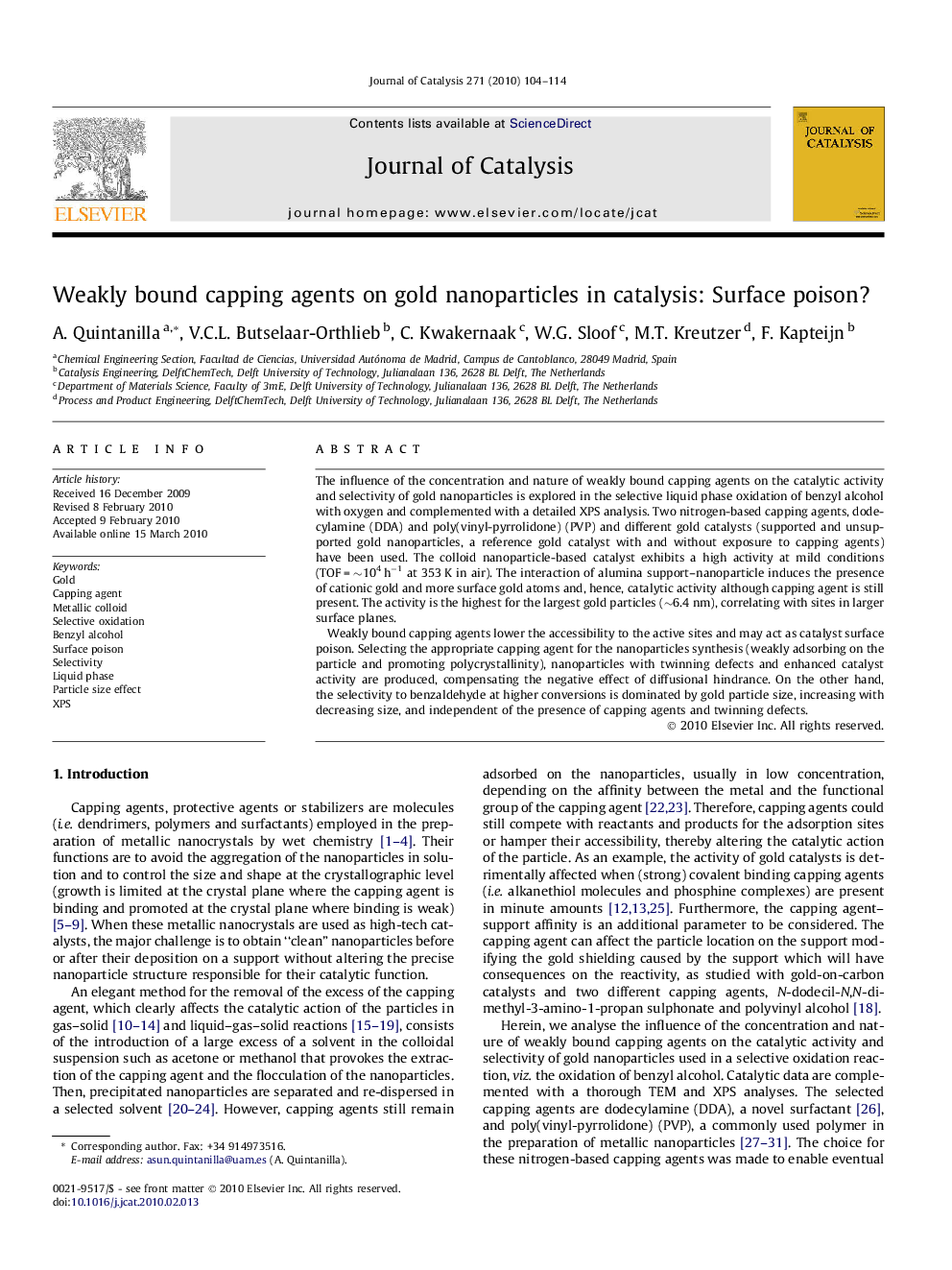| Article ID | Journal | Published Year | Pages | File Type |
|---|---|---|---|---|
| 61861 | Journal of Catalysis | 2010 | 11 Pages |
The influence of the concentration and nature of weakly bound capping agents on the catalytic activity and selectivity of gold nanoparticles is explored in the selective liquid phase oxidation of benzyl alcohol with oxygen and complemented with a detailed XPS analysis. Two nitrogen-based capping agents, dodecylamine (DDA) and poly(vinyl-pyrrolidone) (PVP) and different gold catalysts (supported and unsupported gold nanoparticles, a reference gold catalyst with and without exposure to capping agents) have been used. The colloid nanoparticle-based catalyst exhibits a high activity at mild conditions (TOF = ∼104 h−1 at 353 K in air). The interaction of alumina support–nanoparticle induces the presence of cationic gold and more surface gold atoms and, hence, catalytic activity although capping agent is still present. The activity is the highest for the largest gold particles (∼6.4 nm), correlating with sites in larger surface planes.Weakly bound capping agents lower the accessibility to the active sites and may act as catalyst surface poison. Selecting the appropriate capping agent for the nanoparticles synthesis (weakly adsorbing on the particle and promoting polycrystallinity), nanoparticles with twinning defects and enhanced catalyst activity are produced, compensating the negative effect of diffusional hindrance. On the other hand, the selectivity to benzaldehyde at higher conversions is dominated by gold particle size, increasing with decreasing size, and independent of the presence of capping agents and twinning defects.
Graphical abstractWeakly bound capping agents lower the accessibility to the active sites and may act as catalyst surface poison. An appropriate capping agent is one weakly adsorbed on the particle and that promotes polycrystallinity, viz. poly(vinyl-pyrrolidone).Figure optionsDownload full-size imageDownload high-quality image (105 K)Download as PowerPoint slide
